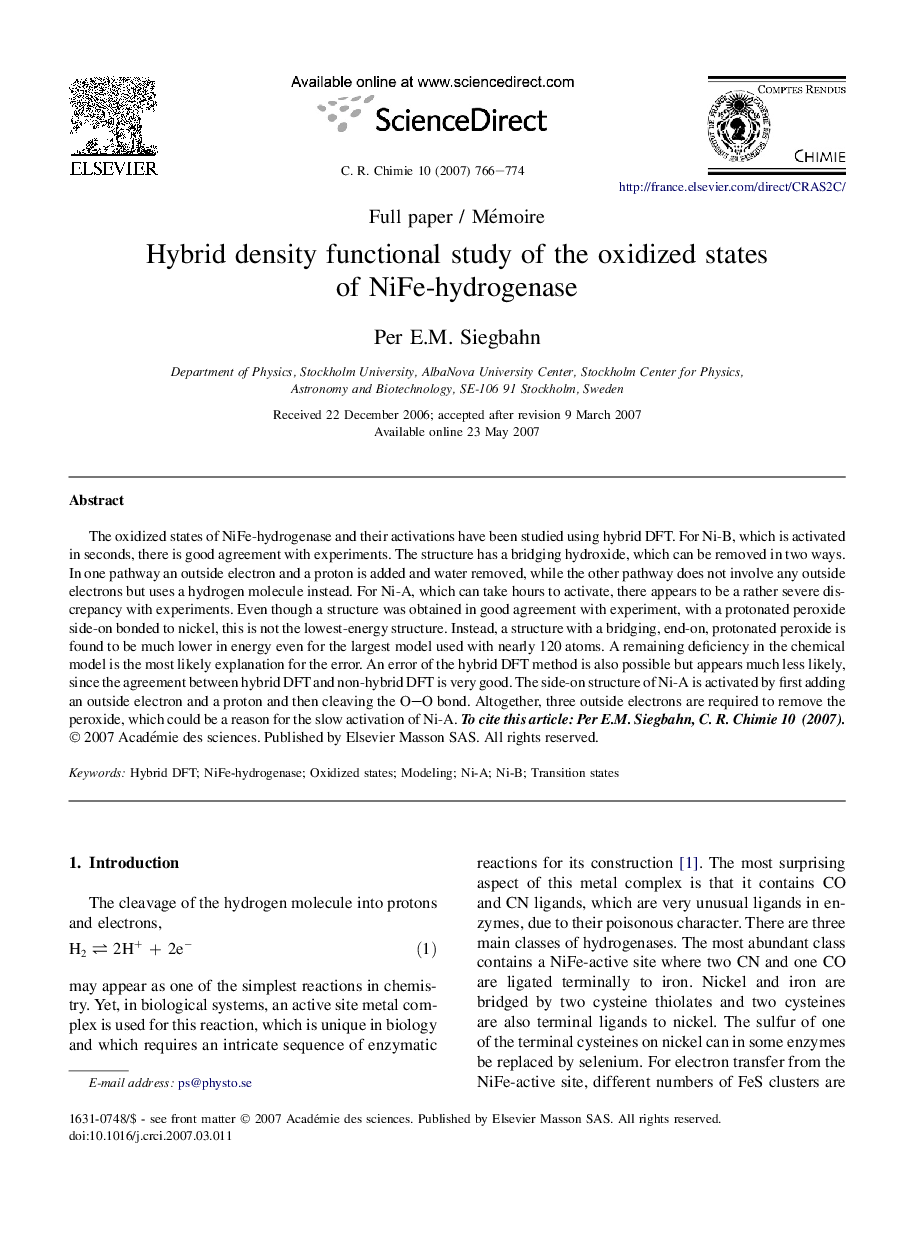| Article ID | Journal | Published Year | Pages | File Type |
|---|---|---|---|---|
| 171522 | Comptes Rendus Chimie | 2007 | 9 Pages |
The oxidized states of NiFe-hydrogenase and their activations have been studied using hybrid DFT. For Ni-B, which is activated in seconds, there is good agreement with experiments. The structure has a bridging hydroxide, which can be removed in two ways. In one pathway an outside electron and a proton is added and water removed, while the other pathway does not involve any outside electrons but uses a hydrogen molecule instead. For Ni-A, which can take hours to activate, there appears to be a rather severe discrepancy with experiments. Even though a structure was obtained in good agreement with experiment, with a protonated peroxide side-on bonded to nickel, this is not the lowest-energy structure. Instead, a structure with a bridging, end-on, protonated peroxide is found to be much lower in energy even for the largest model used with nearly 120 atoms. A remaining deficiency in the chemical model is the most likely explanation for the error. An error of the hybrid DFT method is also possible but appears much less likely, since the agreement between hybrid DFT and non-hybrid DFT is very good. The side-on structure of Ni-A is activated by first adding an outside electron and a proton and then cleaving the O–O bond. Altogether, three outside electrons are required to remove the peroxide, which could be a reason for the slow activation of Ni-A.
